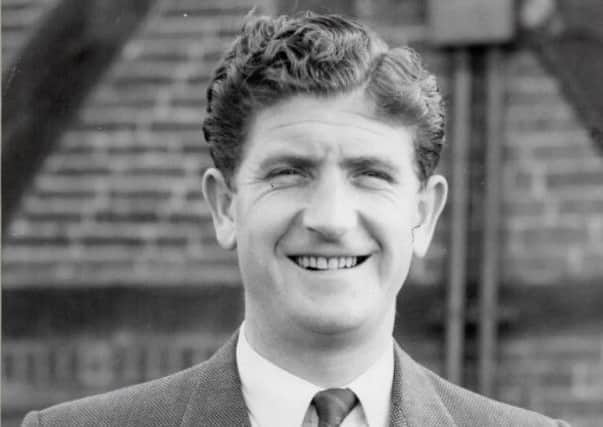Obituary: Gabe ‘Jock’ Bryce OBE, test pilot


GABE Bryce joined the RAF in 1939 and remained passionately committed to the flying and the improvement of aircraft safety all his life. From distinguished service flying Wellingtons during the Second World War, Bryce then joined the King’s Flight flying the Vickers Viking. He left the RAF in 1947 and joined Vickers-Armstrong as a senior test pilot at Wisley. In 1951 he became chief test pilot and during his flying career at Vickers and BAC was involved in the early flights of many important UK aircrafts and on the early use of ejector seats.
Colin Russell worked with Bryce as an engineer on various projects and remembers him with special warmth. “Jock was a stimulating man to work with. Meticulous in every aspect of flying. He was fastidious in all his preparations before a flight and checked and rechecked every dial. Jock would spend hours in the mucked-up cockpit working through the system. In those days, there were no simulators – all pre-test flying had to be done in the hanger and in a cockpit. It required immense technical skill. Jock had that and never left anything to chance. He was a pioneer, a gentle man and a real friend.”
Advertisement
Hide AdAdvertisement
Hide AdGabe Robb Bryce was educated at Glasgow High School and followed his brother Andrew into the RAF in 1939. He did his training at Prestwick and Warmwell in Dorset and was initially posted to the Special Duty Flight flying Blenheims from Leuchars, Wick and Christ-church. In 1942, he was posted to 172 Chivenor flying Wellingtons patrolling the Atlantic and North Sea for U-boats.
He was then commissioned and posted to Montreal delivering lend-lease aircrafts to Britain. When the war ended, Bryce was posted to a specialist squadron in South East Asia Command testing long-range transport.
He left the RAF in 1947 with the rank of Flight Lieutenant and joined Vickers-Armstrong flight test at Wisley. It was to prove a most challenging time for Bryce as he was involved in the first flights, as captain or co-pilot, of 11 prototypes. These included such famous aircrafts as the Tay (Jet) Viscount, the Vanguard and the VC10, which Bryce had flown on its first flight in 1962 with his co-pilot Brian Trubshaw. The landing of such a large plane as the VC10 at the small Wisley aerodrome was a hazardous manoeuvre, but Bryce safely landed the plane and spoke to the entire crew on the intercom: “I’d like to thank you all for the tremendous help you’ve been to me in the last 20 months and especially in the last 20 minutes.”
Bryce also flew on the prototype first flight of the Viscount. Along with many former colleagues from Weybridge, he was a guest passenger on the 25th anniversary flight on the last Viscount service with British World Airlines in 1996.
The prototype Vickers Valiant was lost in an unfortunate air accident in 1962 as a result of a severe fuel fire.
Bryce ejected successfully, but his co-pilot died. Bryce’s experience in this tragedy led him to be involved in the improvement of ejector seats.
When he retired from the post of chief test pilot at British Aircraft Corporation in 1964, he handed over to his deputy, Brian Trubshaw. Bryce was appointed sales director at Weybridge and remained in that post until his full retirement in 1975.
Bryce had a most active retirement: first he ran a “luxury cat hotel” on the boundary of the Wisley airfield and was a volunteer at Brooklands Museum, where his expertise proved invaluable explaining many of the exhibits – especially the Wellington Bomber and the VC10. He was made an OBE in 1957 and was the first recipient of the prestigious Sir Barnes Wallis Medal by the Guild of Air Pilots in 1980.
Advertisement
Hide AdAdvertisement
Hide AdBryce remained a fervent supporter of Partick Thistle (and Fulham) and a keen golfer all his life. In retirement, Bryce and his wife had an apartment in Largs, which they visited often and much enjoyed seeing friends in the area. Russell recalls: “While at the Brooklands Museum, he was happy to cut the grass: that was the measure of the man. He retained his Scottish accent all his life. Jock was proud of that.”
At Bryce’s funeral, his son Alan concluded his eulogy by saying that his interests included “the garden, his shares and, of course, his beloved Scotland where the family holidayed at any opportunity. Gabe was a successful, daring man who also loved his family and will be deeply missed by them.”
Bryce married Nancy in 1947 and is survived by her and their children Sharyn and Alan.